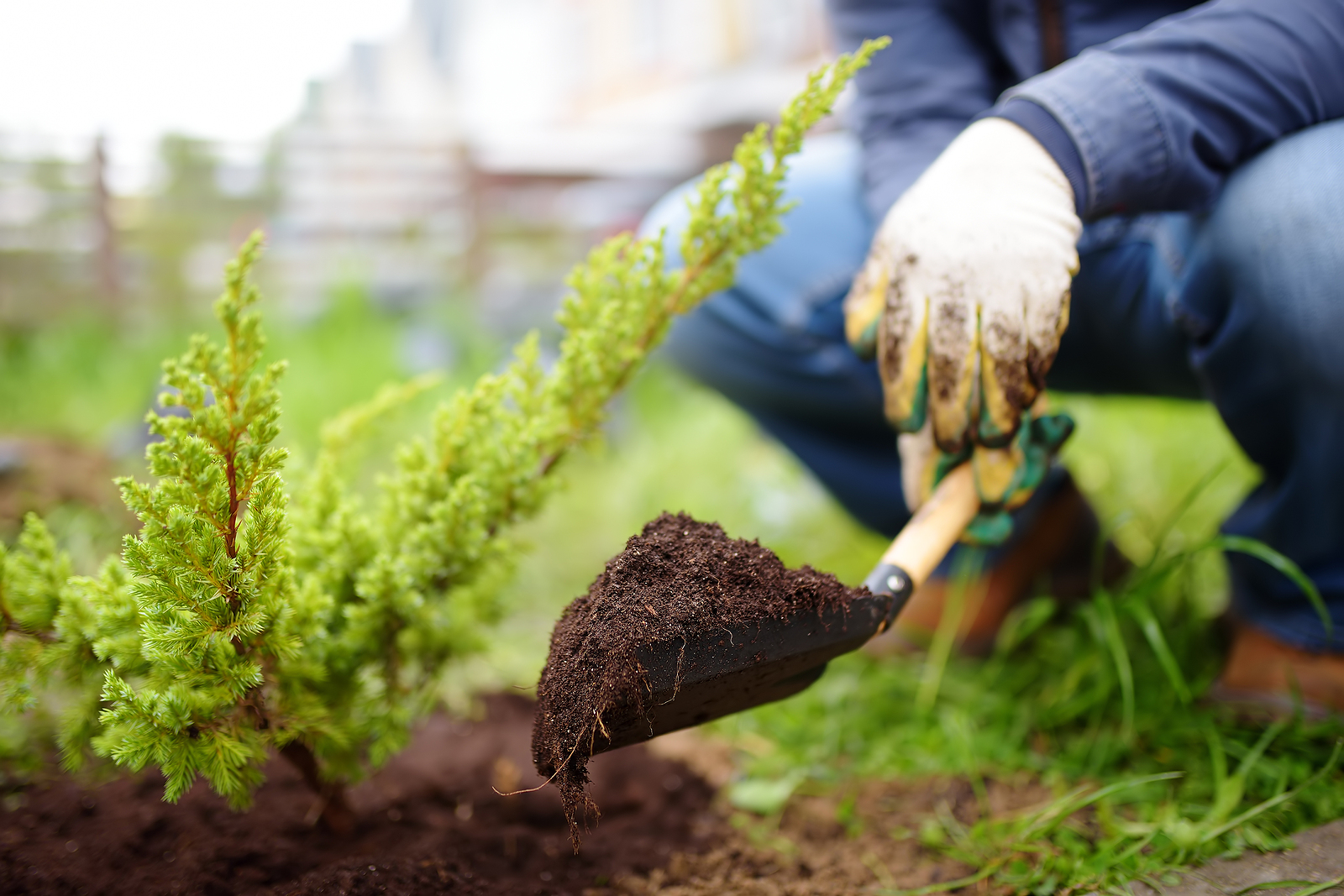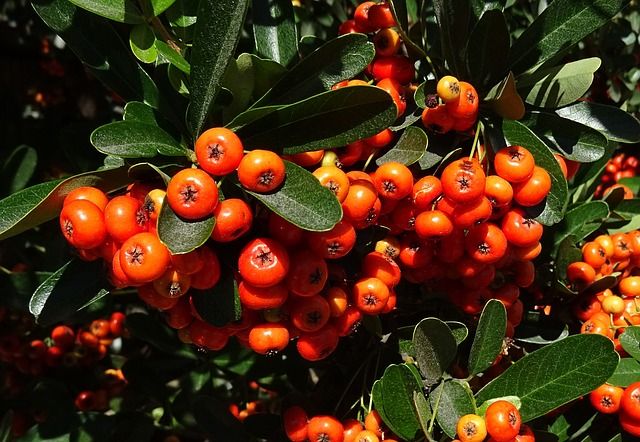Landscapes don’t have to be barren from late fall until spring. Hardworking, evergreen, cold-hardy shrubs can lend color and texture to your yard. Some will even offer you gorgeous flowers when the weather warms up.
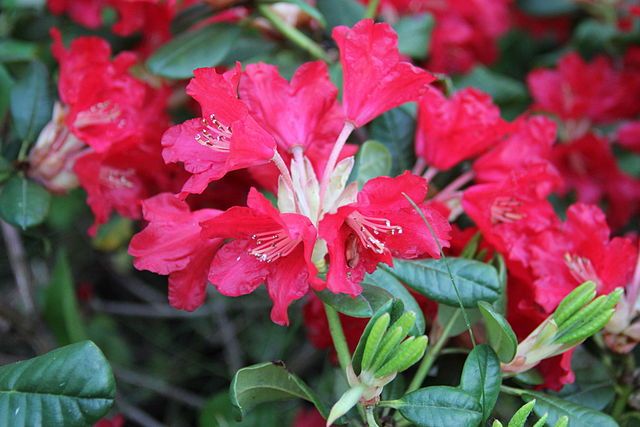 CC BY-SA 3.0 via Wikimedia Commons
CC BY-SA 3.0 via Wikimedia Commons
Rhodendron
With more than 1,000 species, the Rhododendron genus has a lot to offer. They can be deciduous or evergreen, depending on species.
One of the most popular types of rhododendron is the azalea. These too are either deciduous or evergreen.
When looking for cold-tolerant evergreens to take you through the winter and explode into color in spring, consider Rhododendron ‘Elviira,” (Rhododendron x ‘Elviira’) pictured above.
Hardiness: Hardy to USDA zones 4 through 8. Elviira can tolerate temperatures to minus 25 degrees Fahrenheit. Find your zone here.
Size in maturity: 3 feet in height and 3 feet wide. A very compact, showy shrub.
Light and water requirements: Partial shade. Water when the top 3 inches of soil is dry.
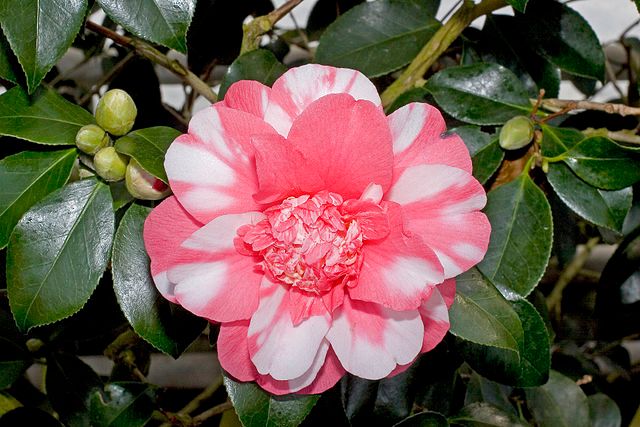 By Olaf Feillinger, via CC BY-SA 2.5
By Olaf Feillinger, via CC BY-SA 2.5
Camellia
You’ll fall in love with the camellia’s glossy green leaves and then go head-over-heels when it blooms. Some call the camellia the “perfect” flower.
With hundreds of species and thousands of hybrids, you’ll have no problem finding one that is perfect for your landscape.
The most common for home gardening are C. sasangua and C. japonica.
Hardiness: Depending on species, camellia is generally hardy in USDA Zones 6 through 9. Some C. japonica species and hybrids can tolerate temperatures between 0 and minus 5 degrees Fahrenheit.
Size in maturity: Height: 10 ft. to 13 ft. Width 5 ft. to 10 feet.
Light and water requirements: Plant your camellia in shade or partial shade and protect it from winds. Keep in mind, however, that flowering may be curtailed in deep shade. Keep the soil moist, but not soggy.
Learn more about camellia care from the American Camellia Society.
Pyracantha
Pyracantha and the winter holidays just seem to be made for one another. Also known as firethorn, this evergreen shrub bears small berries all winter long. Although the varieties with red berries are the most common, you can also find pyracantha that boast orange, white and yellow berries.
One of the questions many homeowners have is about the toxicity of the berries. “The berries have not been shown to be toxic to animals or humans, although swallowing large amounts might cause some mild stomach upset,” according to webpoisoncontrol.org.
Hardiness: Depending on species, pyracantha is generally hardy in USDA Zones 6 through 9 and temperatures as low as negative 10 degrees Fahrenheit.
Size in maturity: Pyracantha can grow to a height of 15 feet and 6 to 8 feet wide.
Light and water requirements: Grow pyracantha in full sun to partial shade and provide water to keep the soil consistently moist in spring through fall. Allow the top of the soil to dry in winter.
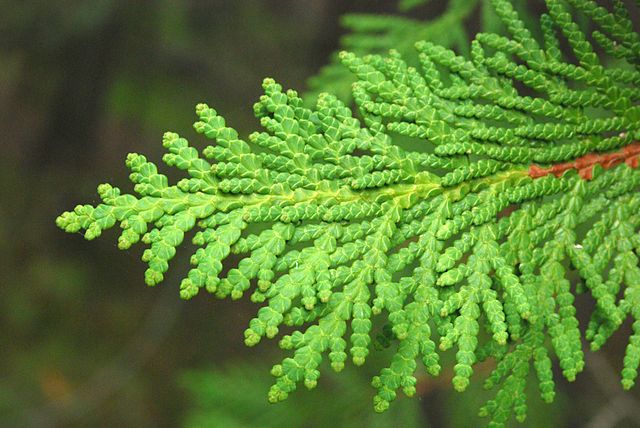 By Joshua Mayer from Madison, WI, USA, CC BY-SA 2.0 via Wikimedia Commons
By Joshua Mayer from Madison, WI, USA, CC BY-SA 2.0 via Wikimedia Commons
Arborvitae
Most gardeners are familiar with the common, pyramid-shaped arborvitae (Thuja occidentalis) Although they’re lovely and solve a number of landscaping problems, we prefer the compact, “globe” types.
In fact, the dwarf, evergreen varieties are so versatile, you can use them just about anywhere. Gardening experts at Southern Living magazine suggest you take a look at the ‘Tater Tot’ and ‘Mr. Bowling Ball’ cultivars.
Hardiness: Cold tolerance is cultivar-dependent, but in general, you’ll find globe arborvitae hardy to USDA zones 3 through 7. According to the experts at Missouri Botanical Garden, ‘Danica’ and ‘Hetz Midget’ can be grown in zone 2.
Size in maturity: Dwarf arborvitae grow from 12 to 24 inches in height and are intolerant of dry soil. Keep the soil evenly moist, but not saturated.
Light and water requirements: For the fullest shrub, grow the arborvitae in full sun. For the first few weeks after planting, keep the soil consistently moist. Once established, keep in mind that it’s better to underwater than overwater the arborvitae.
